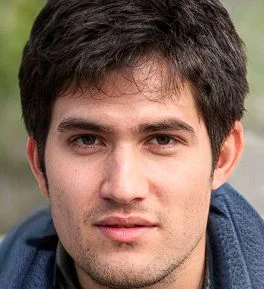The evolving landscape of consumer behavior reveals increasingly fluid boundaries between luxury and mass-market retail, a trend notably exemplified by public figures previously synonymous with high-end consumption. Kathy Hilton, a prominent member of the affluent Hilton family, recently disclosed her patronage of Shein, a leading ultra-fast fashion e-commerce platform. This unexpected engagement with a value-driven online retailer by an individual of her stature highlights the pervasive reach of digital-first fashion paradigms across diverse socio-economic strata.
- Affluent personality Kathy Hilton disclosed purchasing items from ultra-fast fashion retailer Shein.
- Her notable acquisition was a $22 eyelet blazer, signaling a shift in consumer priorities across income brackets.
- This indicates a broader trend where practicality and affordability appeal to consumers traditionally associated with luxury.
- Her daughter, Paris Hilton, offered a positive cultural affirmation to the purchase, echoing acceptance within influential circles.
- Kathy Hilton’s participation in “The Real Housewives of Beverly Hills” also reflects a modern approach to personal branding for high-profile figures.
- The development underscores a significant shift in retail, challenging traditional market segmentation.
The Convergence of Retail and Shifting Consumer Paradigms
During a recent interview, Hilton detailed a specific purchase from Shein: a $22 eyelet blazer. Her decision to acquire an item from a company built on rapid production cycles and highly competitive pricing suggests a broader trend where practicality and affordability appeal even to consumers traditionally associated with bespoke or designer apparel. This instance profoundly underscores the strategic efficacy of Shein’s model in capturing significant market share by democratizing fashion access, influencing purchasing habits well beyond its initial target demographic. The anecdote also subtly touches upon contemporary influence, as Hilton indicated her daughter, Paris, had previously inspired her fashion choices, indirectly connecting with the shift towards more accessible trends championed by digital platforms.
Beyond Consumption: Branding and Influence in the Digital Age
Paris Hilton’s subsequent reaction, characterized by her iconic phrase “That’s hot,” offered a cultural affirmation rather than disapproval, potentially signaling an acceptance of these converging market trends within influential circles. Separately, Kathy Hilton’s decision to participate in “The Real Housewives of Beverly Hills,” a move initially met with reservations from her daughters, reflects a contemporary and strategic approach to personal branding and public engagement. This holds true even for individuals with established business ties, such as her husband, Richard Hilton, co-founder of the prestigious real estate firm Hilton & Hyland. Her engagement with a widely viewed reality television series further underlines a strategic consideration of public platforms for figures associated with significant real estate and hospitality enterprises, demonstrating a deliberate evolution in how high-net-worth individuals manage their public image and connect with broader audiences.
A New Era for Retail: Redefining Value and Segmentation
Ultimately, this development signals a significant shift within the retail sector. The burgeoning influence of digital-native platforms like Shein continues to challenge traditional market segmentations, prompting analysis into how consumers across all income brackets are re-evaluating value, style, and brand loyalty. Such market dynamics indicate a future where the lines between luxury and affordability become increasingly blurred, driven primarily by enhanced accessibility and rapidly evolving fashion cycles that cater to a diverse range of consumer preferences. This ongoing transformation suggests a future where retail success hinges less on traditional demographic divisions and more on adaptive models that resonate with a global, interconnected consumer base.

David Thompson earned his MBA from the Wharton School and spent five years managing multi-million-dollar portfolios at a leading asset management firm. He now applies that hands-on investment expertise to his writing, offering practical strategies on portfolio diversification, risk management, and long-term wealth building.